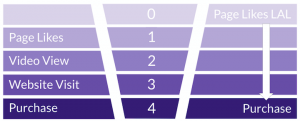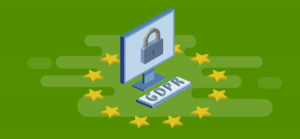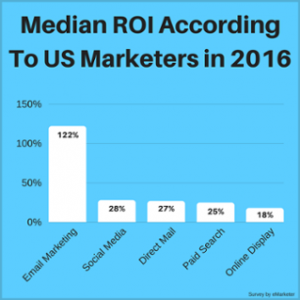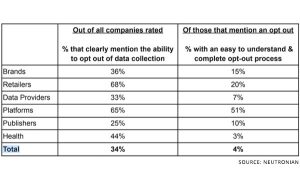— June 12, 2019
You have an appealing website and a strong social media presence. But why are you not earning more? Where do 1.6 billion online consumers spend their money? If you want more peaks than valleys, you have to pay attention to research and data. E-commerce data should serve as the foundation of your digital marketing. It should guide you in designing your web pages, creating digital marketing campaigns, and delivering customer service.
Unleash the potential of your data “to give your business intelligence and provide a seamless experience to your customers,” according to digital marketing leader Propelrr.
Get your money’s worth from paid traffic

Photo courtesy of Kaboompics via Pexels
How to boost e-commerce sales? Setting up an online store is not enough. Remember that you are competing against millions of businesses online—many of which are large brands—for the attention of consumers. You need to know how to collect relevant data, assess and use these to increase e-commerce traffic, and convert them to sales.
While there are lots of free e-commerce tools for you, we recommend that you spend (of course, within your budget) on your campaigns. Spend on paid traffic. Test the waters with a budget of no more than $ 50. Facebook ads are a good starting point. If you do not meet the targeted traffic on your first go, it is okay. Do not be discouraged. If one campaign does not work, you can always create a new one. This is the reason why you should not be spending your entire digital marketing budget on a single campaign.
You can also drive traffic to your e-commerce site through multiple paid campaigns. It is important to track each to know which are bringing results so you could allocate a bigger budget on the right campaigns. This technique is more efficient than testing one campaign after another.
Identify customer interest and boost AOV

Photo courtesy of Negative Space via Pexels
According to an IDG study, about 78 percent of businesses claim that data collection has a strong influence on how they make changes in their organizations. Data-driven e-commerce allows companies to identify and understand customer preferences and personalization opportunities. How to grow e-commerce sales? Uncover customer interest and increase Average Order Value (AOV).
Demographic information provides your site visitors age range, gender, location, and other profile details. But Google Analytics goes beyond these—it gives detailed consumer information. You can view analytics metrics and even create segments based on several dimensions, such as age, affinity categories, and in-market segments. Affinity categories are types of audiences such as sports fans and food enthusiasts, while in-market segments include product-purchase interests. Having these pieces of information can help you identify the consumer categories for your visitors and guide you in developing effective content marketing campaigns.
AOV is a performance indicator that measures your total revenue in a period, divided by the number of orders placed in the said period. The higher the AOV, the more effective your digital marketing strategies. You can increase your AOV by offering discounts for multiple purchases, cross-selling products, and offering free shipping for orders that reach a specific amount.
Use your data to devise content marketing campaigns and increase your AOV.
Know the right social media platform
Photo courtesy of Tracy Le Blanc via Pexels
Social media is a cost-efficient sales and marketing platform. It levels the playing field for big and small businesses and brings steady traffic and boost your conversion rate. These platforms also provide e-commerce data collection to help businesses measure the viability of their marketing campaigns.
How to increase online sales fast on social media? Not all platforms are created equal. Make use of your data to identify the one that suits your business and target customers.
What is the right social media for you? Facebook remains the largest social network, with more than two billion monthly users. It is highly popular among users aged 35 and older and in Southeast Asian countries. Facebook has a one-stop shop platform—it provides everything you need, from paid ads to online shopping.
YouTube, the second-largest platform, is a popular platform for social media influencers. It serves more as an advertising tool. Instagram now allows businesses to indicate product description and prices for a more informed shopping experience. Teens and millennial consumers prefer it.
The micro-blogging site Twitter is predominantly used for information dissemination. It is also an effective customer service channel as more than 80 percent of social customer service requests happen on this platform.
Match the right social network with your business and audience.
Increase the amount of trust in your funnel
Photo courtesy of Burst via Pexels
How to boost sales in a small business? Improve trust in each stage of your funnel. Funnel is the process that a potential buyer goes through in buying an item. Be aware that not all attempts lead to a completed transaction. Not a few leave before reaching the check-out page. About 17 percent of those who abandon their carts are concerned about payment security, while a whopping 61 percent cancel the transaction due to the lack of a trust seal.
Increase your sales by increasing the amount of trust in your funnel. You can do this in various ways like adding customer reviews of the products displayed. A study shows that a staggering 90 percent of customers said that positive online reviews influence their buying decisions.
You can also improve trust in your funnel by adding a live chat option that allows immediate response to queries. Live chat is preferred over other customer service tools.
Make shopping in your site a trustworthy process.
When it comes to e-commerce, data is power. It can lead the path to effective digital marketing campaigns that will bring in traffic and potential customers. Gathering data is not enough. Maximize it to boost your bottom line. Jordan Louis, digital marketing expert and author, perfectly explains it:
“The more we know about how visitors are using content, and the more accurate that knowledge is, the better we can find out what sort of content works best for our target audience and adjust our strategy and posting schedules accordingly. Content may be king, but data is its queen.”
Business & Finance Articles on Business 2 Community
(40)







